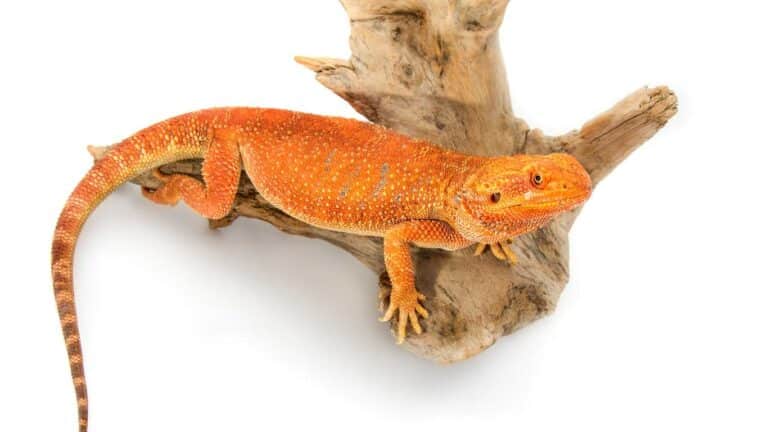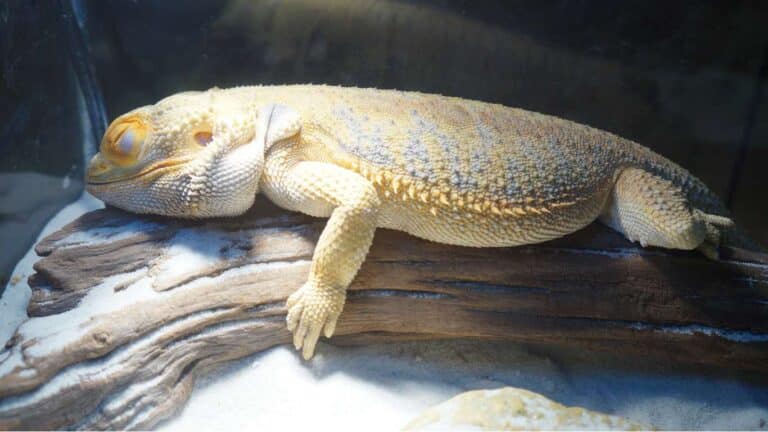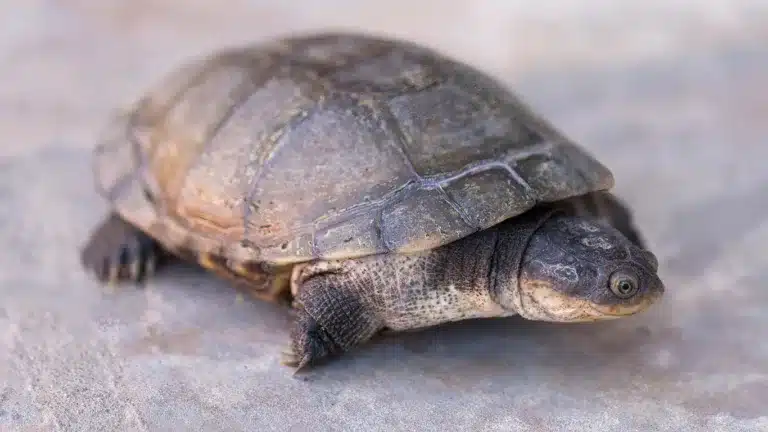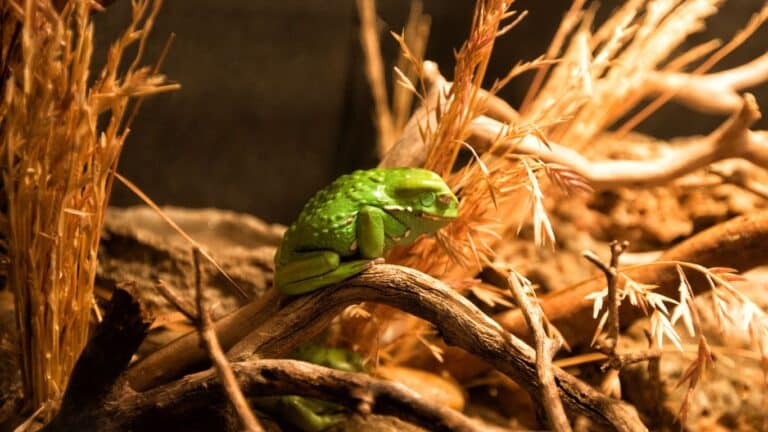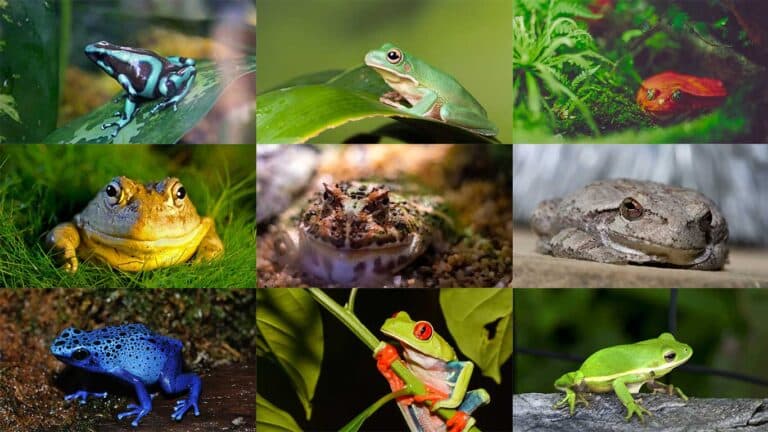Leopard Geckos are fascinating creatures that make wonderful pets. If you are a proud owner of a baby leopard gecko, it’s essential to provide them with the right care and nurturing. This section will provide you with valuable tips on how to ensure the well-being of your baby leopard gecko.
Feeding your baby leopard gecko the right diet, understanding their behavior, and creating a stress-free environment are some of the key aspects of responsible pet ownership. By implementing these essential tips, you can help your baby leopard gecko thrive and enjoy a happy and healthy life.
Core Insights To Baby Leopard Gecko:
Understanding Baby Leopard Gecko Behavior
When bringing a baby leopard gecko into your home, it’s important to understand their behavior and unique needs. During their acclimation period, which typically lasts around one week, baby leopard geckos may not eat as they adjust to their new surroundings. This can be a normal behavior and should not cause immediate concern.
Another fascinating behavior of baby leopard geckos is their shedding process. Geckos shed their skin once or twice a week, and it’s completely normal. During this time, they may appear dull or opaque in color, and you may notice small pieces of shed skin in their enclosure. It’s important to note that geckos often consume their shed skin as a natural instinct, which helps them maintain their health.
Baby leopard geckos are primarily nocturnal creatures, meaning they are most active during the night. During the day, they tend to hide and sleep, seeking shelter in their enclosure’s hiding spots. Having a comfortable and secure hiding spot is crucial for their well-being, as it allows them to feel safe and secure in their environment.
Did You Know? Startled baby leopard geckos may exhibit a defense mechanism by dropping their tail. This behavior, known as tail autotomy, is a natural response to perceived threats and allows the gecko to escape from predators. If your gecko does drop its tail, don’t worry—it will eventually regenerate a new one.
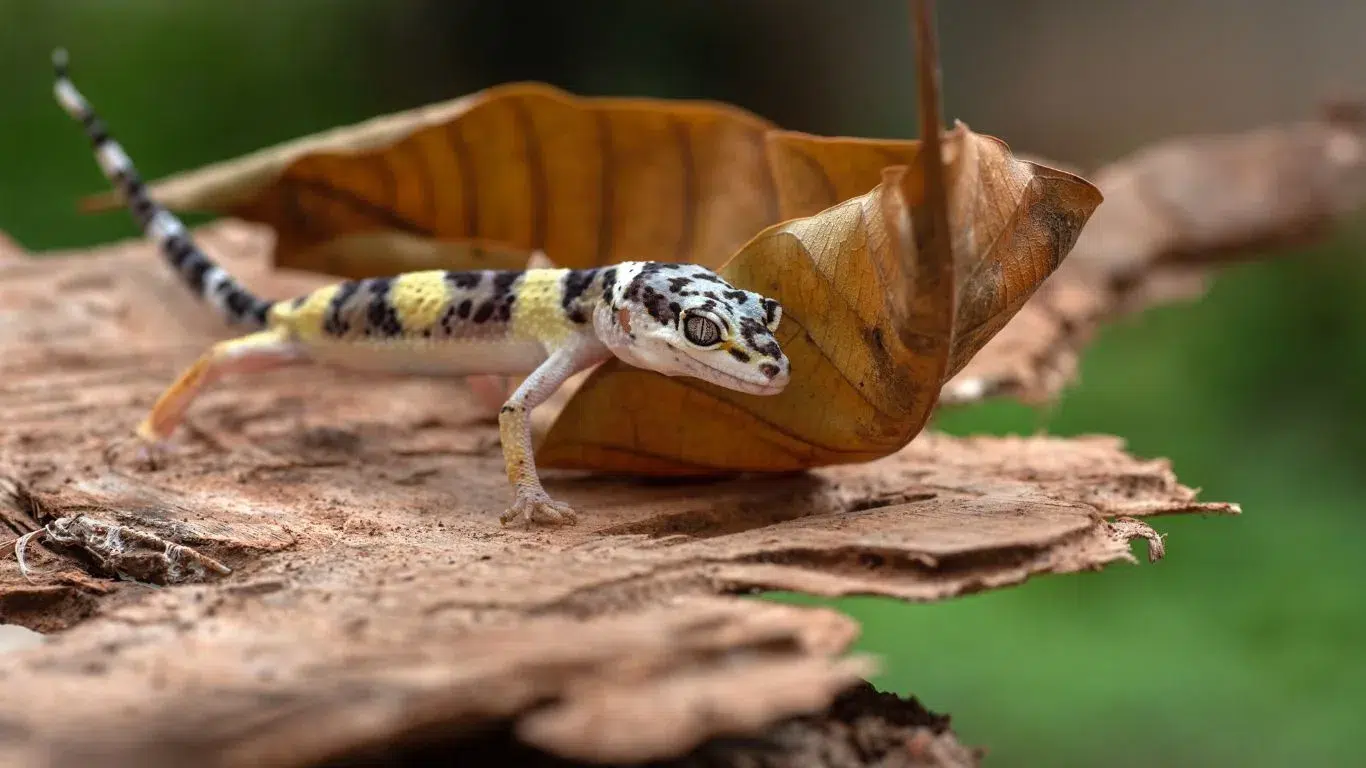
Baby Leopard Gecko Behavior Overview
- May not eat during the acclimation period
- Shed their skin once or twice a week
- Primarily active at night
- Tend to hide and sleep during the day
- May drop their tail if startled
To better understand baby leopard gecko behavior, it’s important to observe and interact with them in a gentle and non-intrusive manner. By providing a suitable environment and respecting their natural instincts, you can ensure that your baby leopard gecko thrives in their new home.
| Behavior | Description |
|---|---|
| Acclimation Period | Baby leopard geckos may not eat during the first week as they adapt to their new environment. |
| Shedding Behavior | Leopard geckos shed their skin once or twice a week, consuming their shed skin in the process. |
| Nocturnal Activity | Baby leopard geckos are active at night and tend to hide and sleep during the day. |
| Tail Dropping | In response to perceived threats, geckos may drop their tail, a defense mechanism called tail autotomy. |
Providing a Stress-Free Environment
Bringing a baby leopard gecko home can be an exciting experience. However, it’s important to remember that these little creatures may experience stress during their acclimation period. It’s completely normal for them to be a bit anxious and not eat for the first week. To ensure their well-being, it’s crucial to provide a stress-free environment and handle them with care.
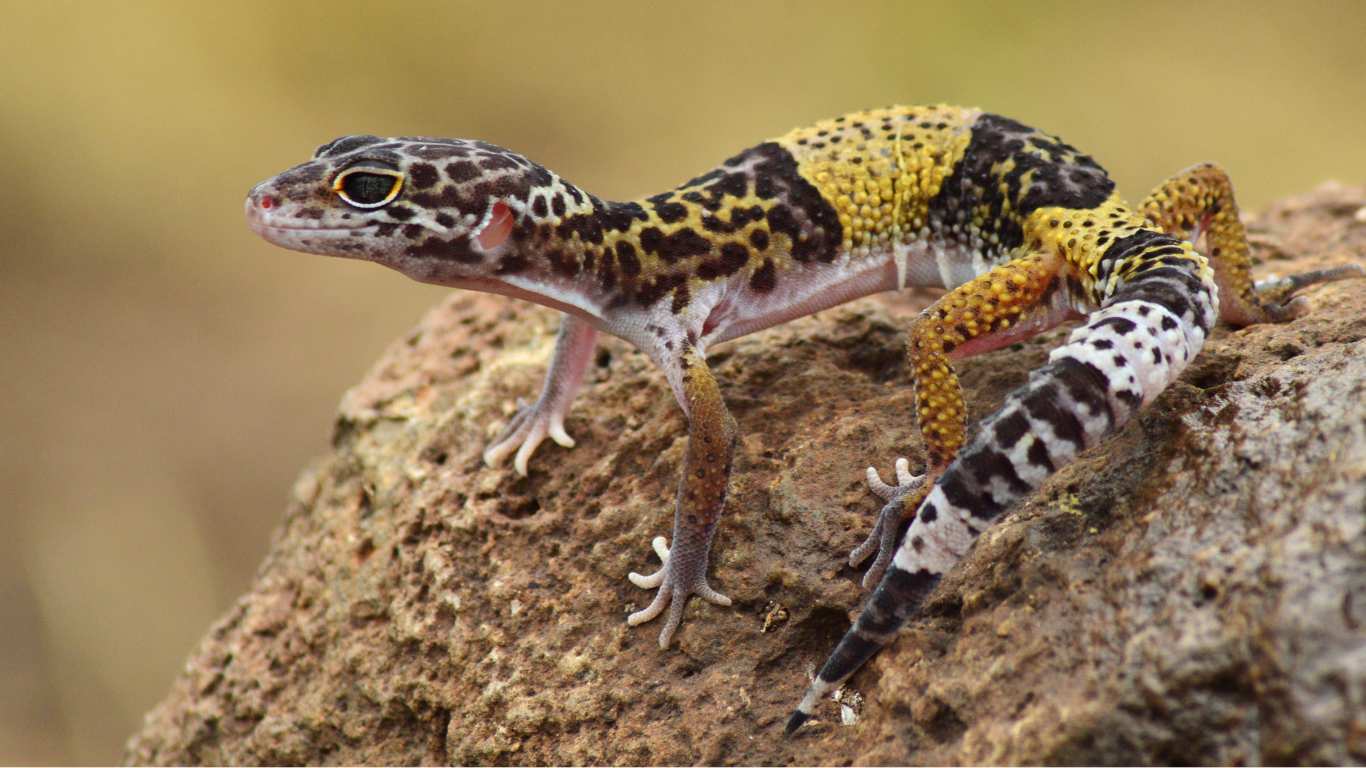
Reducing Stress in Baby Leopard Gecko
Avoid overcrowding their enclosure with additional insects during the acclimation period. Baby leopard geckos need time to adjust to their new surroundings and may feel overwhelmed by too much activity. Let them settle in and explore at their own pace.
It’s crucial to minimize any unnecessary disturbances during this time. Keep interactions to a minimum and avoid touching or handling them until they appear more comfortable and relaxed. This will help reduce their stress levels and promote a smooth transition to their new home.
Handling Baby Leopard Gecko
When the time comes to handle your baby leopard gecko, it’s essential to do so with patience and gentleness. Start by allowing them to become familiar with your hand by offering it near them. Let them approach and climb onto your hand voluntarily.
Never grab or squeeze your gecko as it can cause them to feel threatened and potentially drop their tail as a defensive mechanism. Handle them smoothly and avoid any sudden movements that may startle them.
Remember, building trust and bonding takes time. Take things slow and respect their boundaries to establish a positive and enjoyable interaction with your baby leopard gecko.
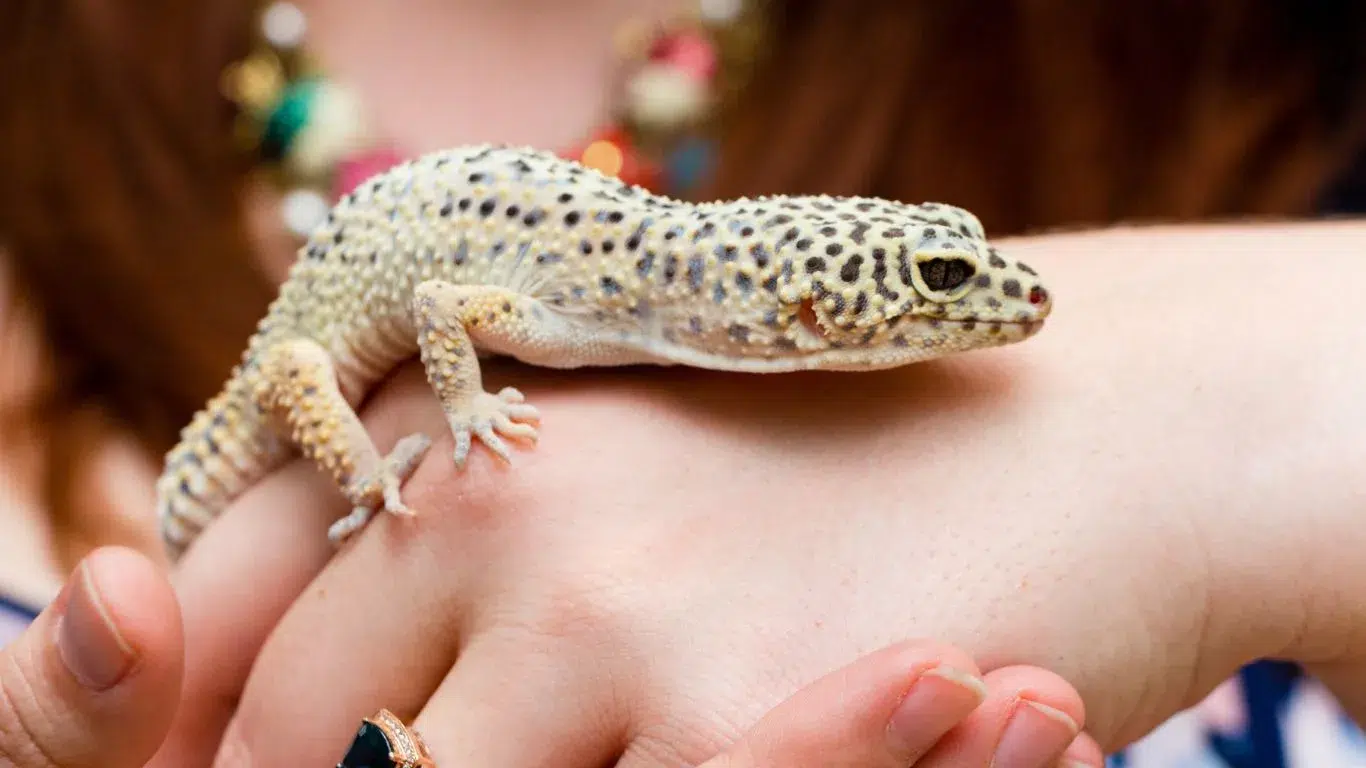
Creating a stress-free environment and handling your baby leopard gecko with care will contribute to their overall well-being and ensure a healthy, happy pet.
| Signs of Stress in Baby Leopard Gecko | Ways to Reduce Stress |
|---|---|
| Loss of appetite | Provide a quiet and calm environment |
| Unusual hiding behavior | Avoid frequent handling during acclimation period |
| Excessive shedding | Let them explore and adjust to their enclosure on their own |
| Aggressive behavior | Minimize exposure to loud noises and sudden movements |
Setting Up the Perfect Enclosure
Creating a suitable habitat setup for your baby leopard gecko is essential for their overall health and well-being. Let’s explore the key elements that should be included in their enclosure to ensure a comfortable and thriving environment.
Enclosure Size
While a small 10-gallon tank may suffice for a baby leopard gecko initially, it’s important to plan for their future growth. As they mature, they will require an enclosure with at least 2.5 square feet of floor space to allow for ample movement and exploration.
Hiding Spots
Leopard geckos are known for their love of hiding and seeking shelter. Provide a variety of hiding spots within the enclosure to mimic their natural habitat. These can include artificial caves, hollow logs, or commercial hiding spots available in pet stores. The presence of hiding spots will help your gecko feel safe and secure.
Shallow Water Dish
A shallow water dish should be placed in the enclosure to provide your baby leopard gecko with a source of fresh water. It’s important to ensure that the dish is shallow to prevent any risk of drowning. Regularly clean and refill the water dish to maintain hygiene.
Heating and Lighting
Creating the right temperature gradient is crucial for the well-being of your baby leopard gecko. A temperature gradient allows the gecko to regulate its body temperature according to its needs. Place a heat source, such as an under-tank heating pad or a ceramic heat emitter, on one side of the tank to create a warm area. The other side should provide a cooler environment. Use a thermostat to maintain optimal temperature levels.
Furthermore to heat, provide a UVB light source to support your gecko’s overall health. UVB lighting helps with calcium absorption and contributes to their overall well-being.
Temperature Gradient
Ensuring a proper temperature gradient is crucial for the thermoregulation of your baby leopard gecko. Maintain a warm side of the enclosure with a temperature range of 90-95°F (32-35°C) and a cooler side with a range of 75-80°F (23-27°C). This temperature gradient allows your gecko to move between the warm and cool areas, keeping its body temperature within the optimal range.
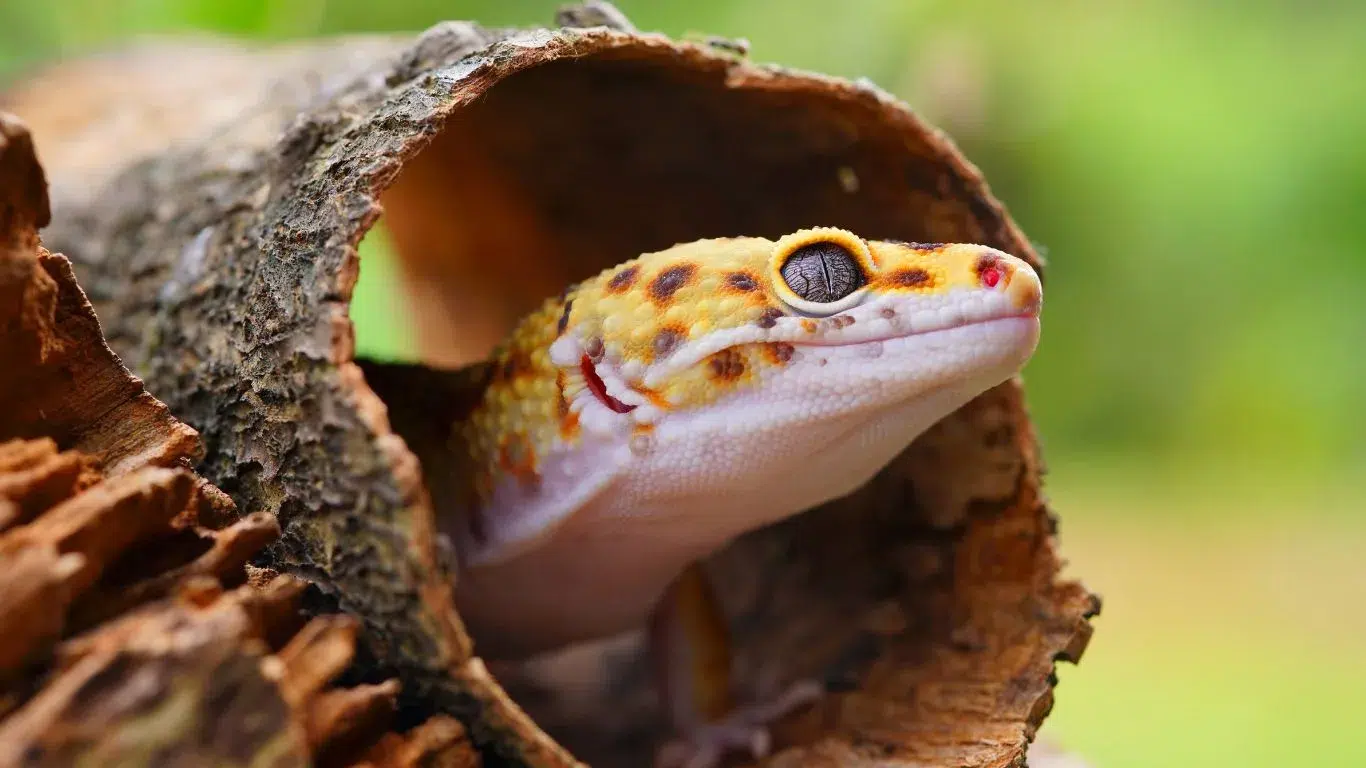
| Temperature Range | Area of Enclosure |
|---|---|
| 90-95°F (32-35°C) | Warm Side |
| 75-80°F (23-27°C) | Cool Side |
Monitoring the temperature gradient in the enclosure using a thermometer is essential to ensure your gecko’s health and comfort. Regularly check and adjust the heating elements as needed.
By providing an appropriate enclosure setup with hiding spots, a shallow water dish, and a temperature gradient, you are creating an ideal habitat for your baby leopard gecko to thrive in.
Choosing the Right Substrate
When creating a comfortable habitat for your baby leopard gecko, selecting the appropriate substrate is crucial. The right substrate not only provides a comfortable surface for your gecko but also helps prevent impaction, a potentially dangerous condition caused by ingesting substrate material.
Avoid using sand or small pebbles as substrates, as they can be easily ingested and lead to impaction. Instead, choose a safer option that is digestible if accidentally consumed. Here are some safe bedding options for your baby leopard gecko:
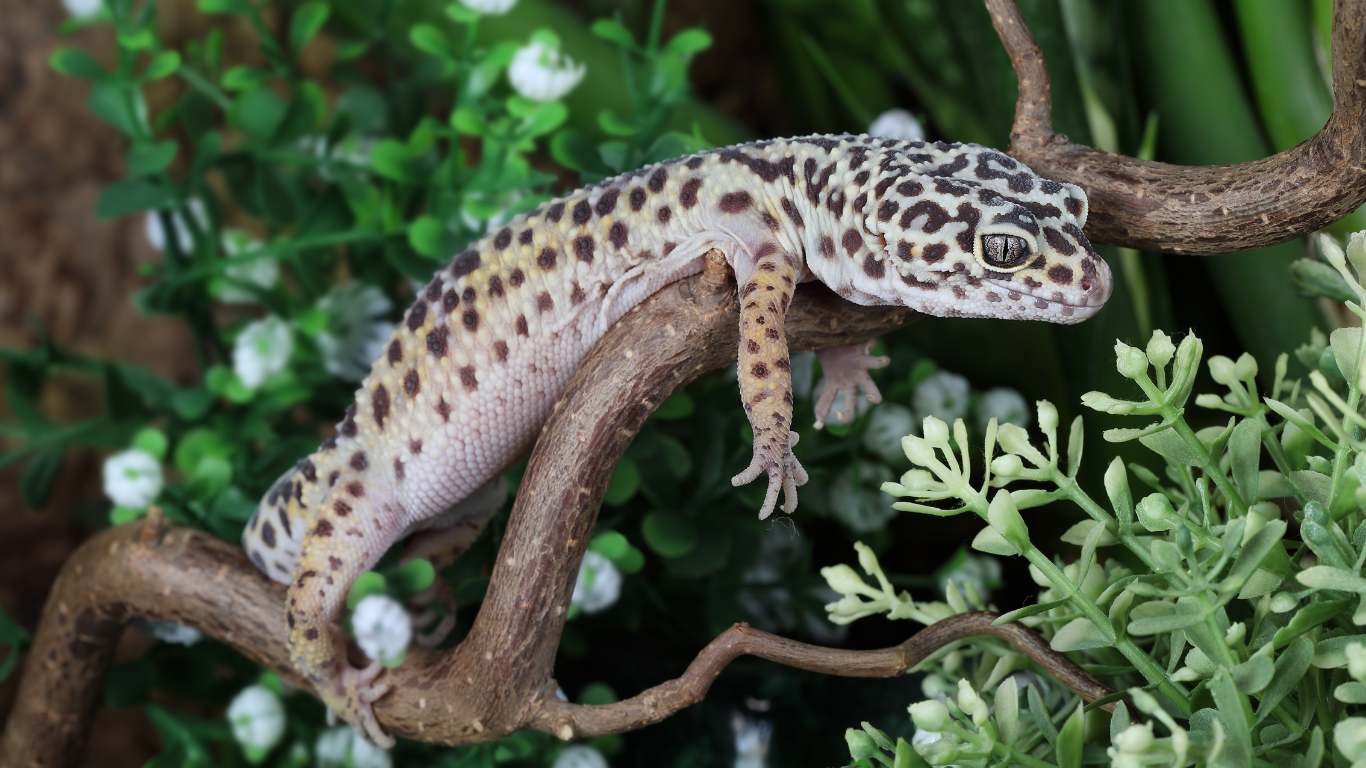
All these substrate options offer a safe and comfortable environment for your baby leopard gecko without the risk of impaction. It’s important to regularly clean and monitor the condition of the substrate to ensure a healthy and thriving gecko.
| Substrate Option | Benefits |
|---|---|
| Reptile Carpet | Soft and easy to clean |
| Paper Towels | Absorbent and disposable |
| Tile | Hygienic and textured for traction |
Creating a Humid Hide
Despite being desert-dwelling creatures, baby leopard geckos have specific humidity needs for a healthy shedding process. Providing them with a humid hide is essential to ensure their skin sheds properly and without complications.
To set up a humid hide for your baby leopard gecko, you can use either damp sphagnum moss or paper towels. These materials help create a humid microclimate within the hide box, assisting in the shedding process.
It’s crucial to place the humid hide closer to the warm side of your gecko’s enclosure. This allows for better humidity control, enhancing the effectiveness of the hide. The warm temperature helps maintain the desired humidity levels inside the hide, promoting successful shedding.

Feeding Your Baby Leopard Gecko
Proper nutrition is crucial for the healthy development and growth of your baby leopard gecko. Understanding their diet, feeding schedule, and insect variety is essential for their well-being.
Baby Leopard Gecko Diet
Your baby leopard gecko’s diet should primarily consist of live insects to provide the necessary nutrients and stimulation. Offer a variety of prey items such as crickets and mealworms to ensure a balanced diet. Remember to avoid feeding insects larger than the width of the gecko’s head to prevent choking hazards.
Feeding Schedule
During their first year, it is recommended to feed your baby leopard gecko daily to support their rapid growth. As they mature, you can transition to feeding them every other day. Observe your gecko’s eating habits and adjust the feeding schedule accordingly, ensuring they have adequate access to food.
Insect Variety
Offering a diverse range of insects is important to provide your baby leopard gecko with a well-rounded diet. This will help mimic their natural hunting behavior and ensure they receive a broad spectrum of essential nutrients. Consider incorporating other suitable prey items like waxworms or dubia roaches to vary their diet.
It’s important to supplement the insects with calcium powder to fulfill their calcium requirements. Dust the prey items with a calcium supplement before feeding them to your gecko. This strengthens their bones and prevents the development of metabolic bone disease.
“Feeding a variety of live insects is crucial for the health and development of your baby leopard gecko.”
By following a balanced diet and feeding schedule, you can ensure that your baby leopard gecko receives the necessary nutrition for optimal growth and well-being.

Handling and Interaction
After bringing your baby leopard gecko home, it’s important to allow them time to acclimate to their new environment. Give them at least 2 weeks before attempting to handle them. This will help reduce stress and allow them to feel more comfortable in their new surroundings.
When the time comes to handle your baby leopard gecko, it’s crucial to be gentle and patient. Instead of grabbing them, encourage them to climb onto your hand by creating a flat and stable surface. This ensures a positive and non-threatening experience for your gecko, building trust and minimizing any potential stress.
Remember to wash your hands thoroughly before handling your gecko to avoid transferring any harmful bacteria. Avoid sudden movements or loud noises that may startle them. Your baby leopard gecko needs time to adjust to human interaction and feel safe in your presence.
Start with short handling sessions, gradually increasing the duration over time. This allows your gecko to become accustomed to your touch and presence. Avoid overwhelming them by keeping handling sessions calm and quiet.
Developing a bond with your baby leopard gecko takes time and patience. By handling them gently and with care, you create a positive interaction that can lead to a trusting relationship. Remember, every gecko is unique, and some may take longer to warm up to handling than others. Be patient and understanding, and let your gecko set the pace.
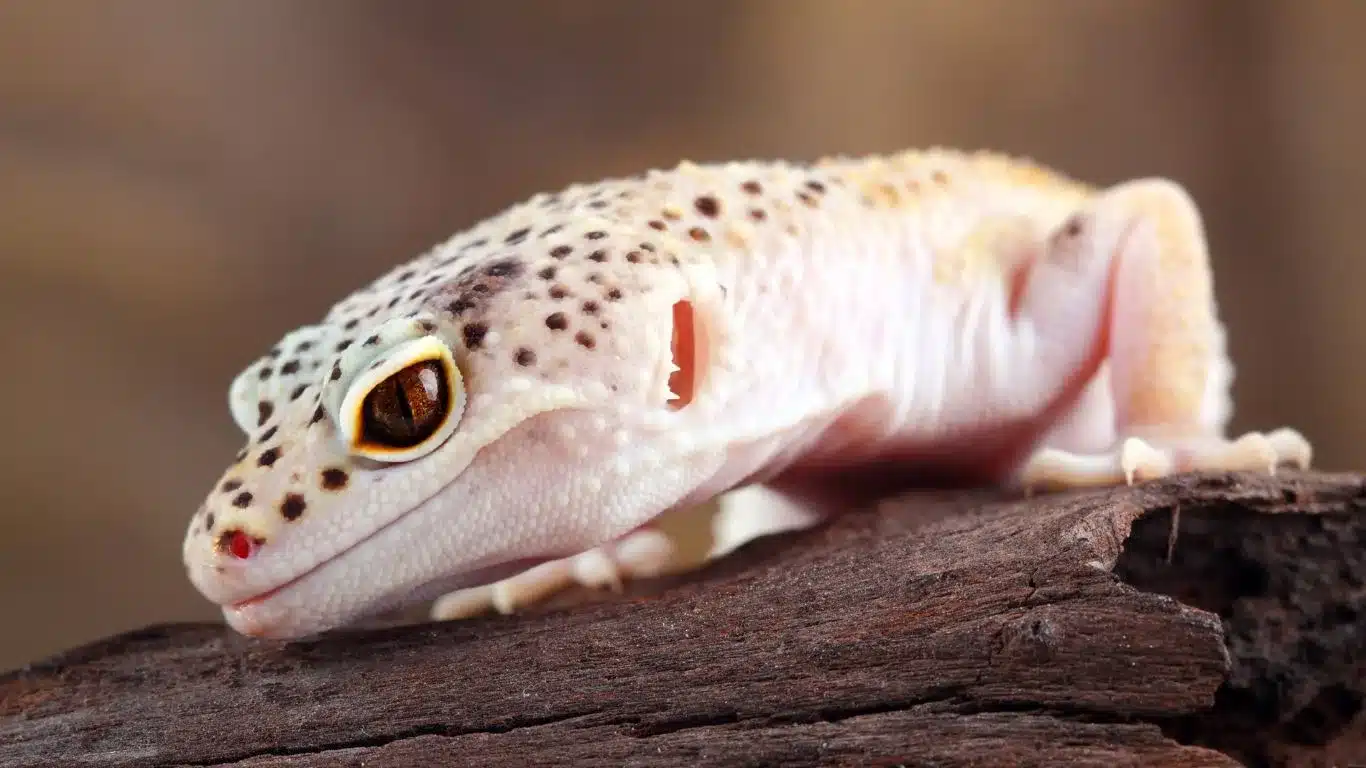
Benefits of Gentle Interaction
Gentle interaction with your baby leopard gecko has numerous benefits. It helps them become comfortable with being handled, allows for regular health checks, and strengthens the bond between you and your pet. Additionally, handling your gecko can provide important mental and physical stimulation, promoting their overall well-being.
“Gentle interaction with your baby leopard gecko builds trust, strengthens the bond, and promotes their overall well-being.”
By fostering a gentle and positive interaction with your baby leopard gecko, you create a nurturing environment that encourages their socialization and development. It’s an opportunity to observe their behavior, monitor their health, and ensure they are growing and thriving.
| Benefits of Gentle Interaction | |
|---|---|
| Builds trust | Handle your gecko gently to establish trust and a positive relationship. |
| Strengthens the bond | Regular handling helps create a deeper connection between you and your gecko. |
| Promotes well-being | Gentle interaction provides mental and physical stimulation for your gecko’s overall health. |
Remember, each baby leopard gecko is unique and may require varied levels of handling and interaction. Observe their behavior and adjust your approach accordingly to ensure their comfort and well-being.
Join the Pet Planet Diaries
Sign up for our newsletter to get the latest tips, stories, and exclusive insights into the wonderful world of pets.
Final Remarks
Owning a baby leopard gecko can be a truly fulfilling experience. By following the essential care tips provided in this guide, you can ensure that your gecko thrives in your care. From setting up the perfect enclosure to providing a stress-free environment, every aspect of their well-being has been covered.
To ensure a healthy and happy gecko, remember to prioritize their needs. This includes providing the necessary warmth and humidity levels, as well as a varied diet that consists of appropriate prey items. Remember to gut-load the insects and supplement their diet with calcium powder for optimal nutrition.
Furthermore, handling your baby leopard gecko with patience and care will help foster a bond between you and your pet. Gradually introduce them to human interaction, allowing them to feel safe and comfortable in your presence.
With proper baby leopard gecko care, you can enjoy the rewards of reptile ownership for many years to come. So, start implementing these tips and watch your gecko thrive in their new home!
FAQ
What do baby leopard geckos eat?
Baby leopard geckos should be fed a variety of prey items, including crickets and mealworms. Insects should be no larger than the width of the gecko’s head. It’s important to gut-load the insects to provide balanced nutrition and supplement their diet with calcium powder.
How often do baby leopard geckos shed?
Baby leopard geckos shed their skin once or twice a week. They eat their shed skin as a natural behavior.
What to feed baby leopard geckos?
Baby leopard geckos should be fed a diet consisting of live insects, such as crickets and mealworms. The insects should be appropriately sized and gut-loaded for optimal nutrition. Calcium powder should also be provided as a supplement.
How long can a baby leopard gecko go without eating?
Baby leopard geckos may not eat for the first week as they acclimate to their new surroundings. It’s important to be patient during this acclimation period and avoid adding more insects to their enclosure. If a baby leopard gecko continues to not eat after the first week, it may be necessary to consult a veterinarian.
How much is a baby leopard gecko?
The price of a baby leopard gecko can vary depending on factors such as morph, genetics, and breeder. On average, baby leopard geckos can range in price from $20 to $100 or more.
How to care for a baby leopard gecko?
To care for a baby leopard gecko, it’s important to provide a suitable enclosure with proper heating, lighting, and hiding spots. The gecko should be fed a varied diet of live insects and have access to a humid hide for shedding. Regular handling should be done gently and gradually to help the gecko become accustomed to human interaction.


